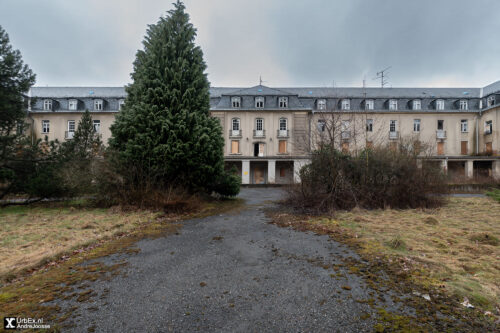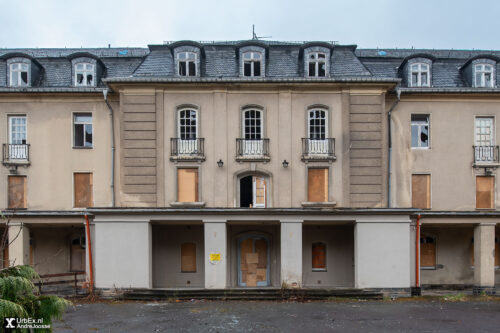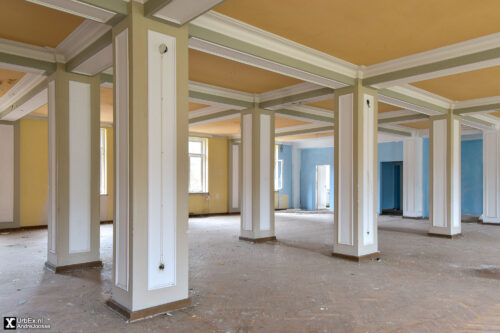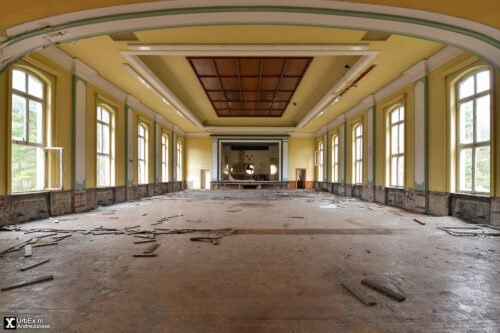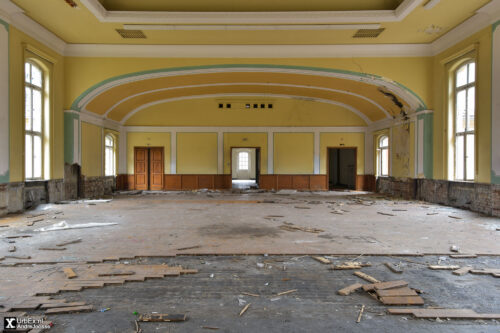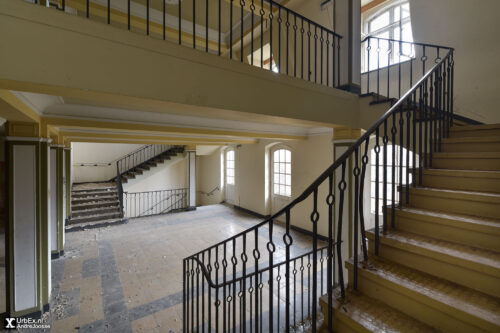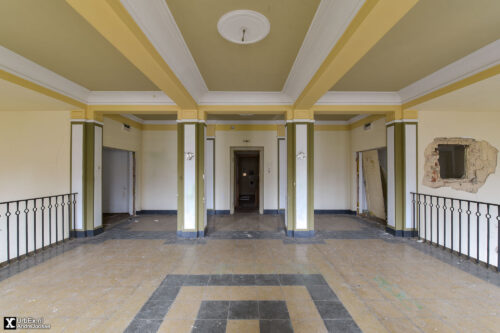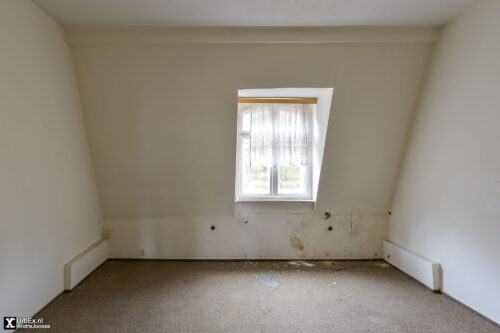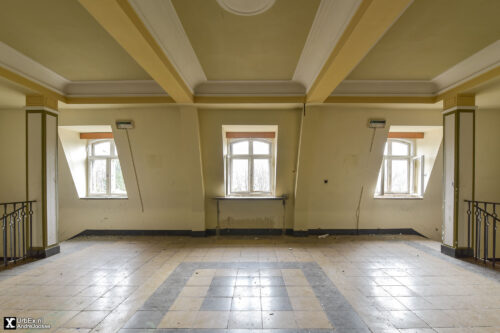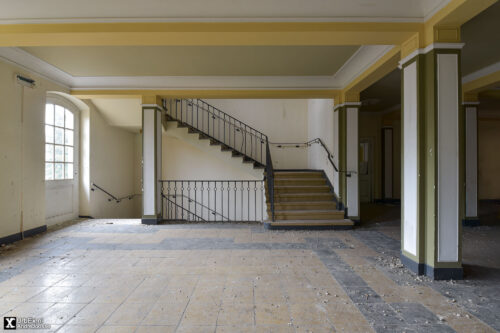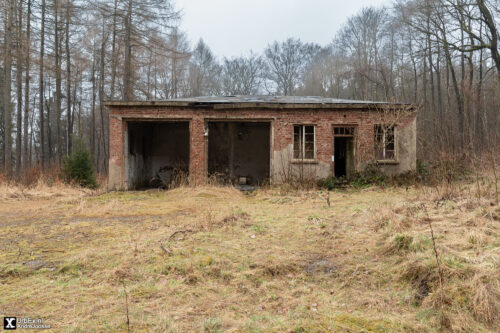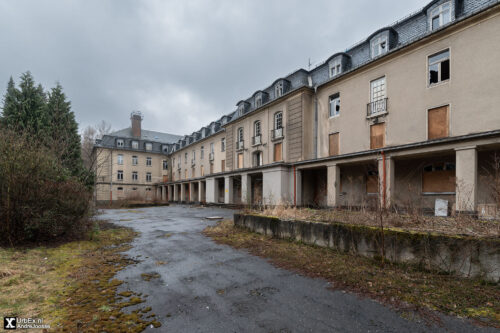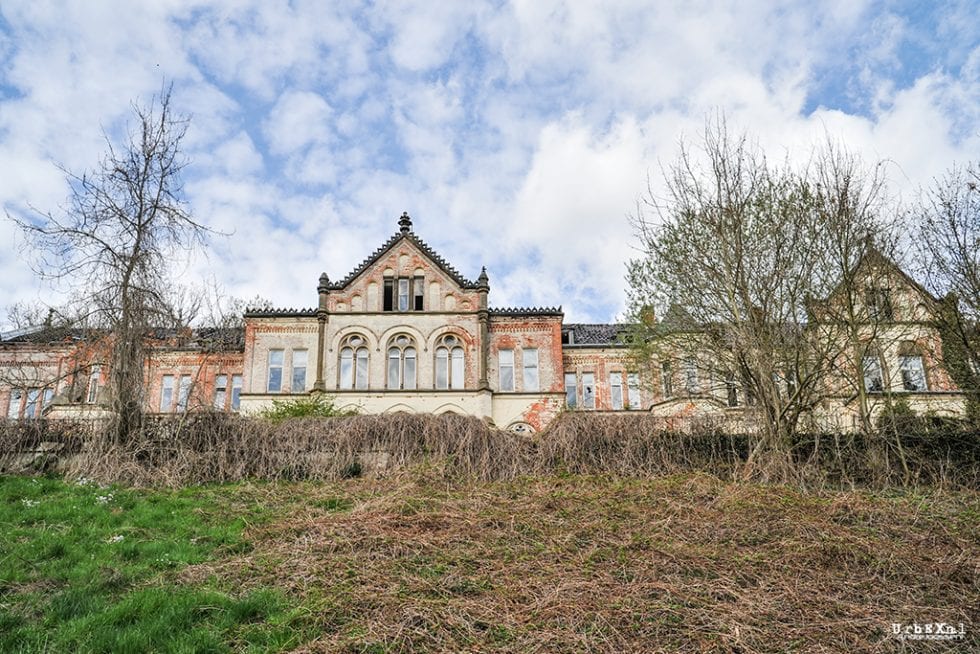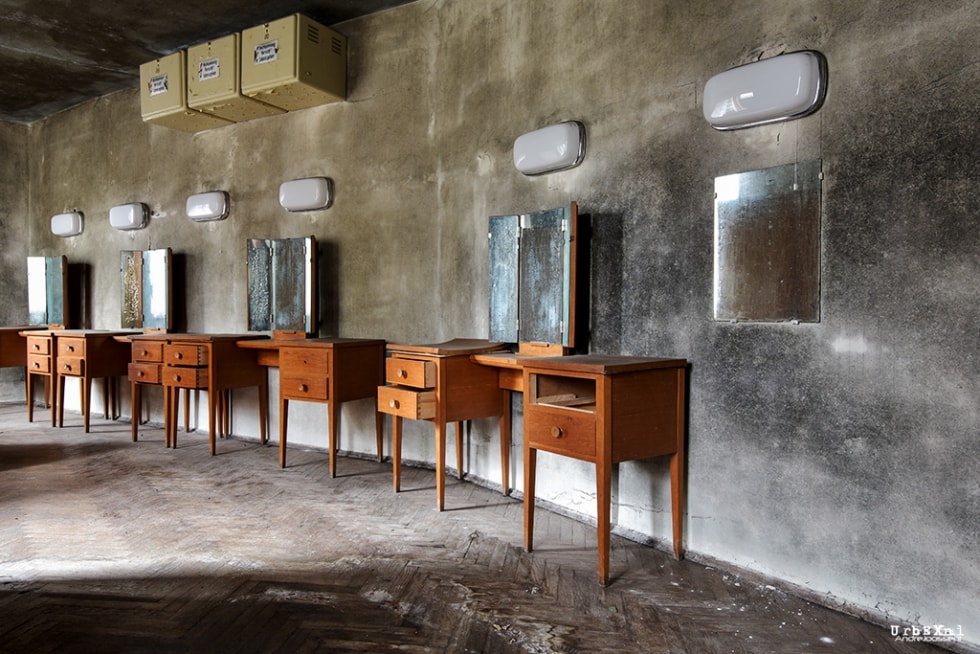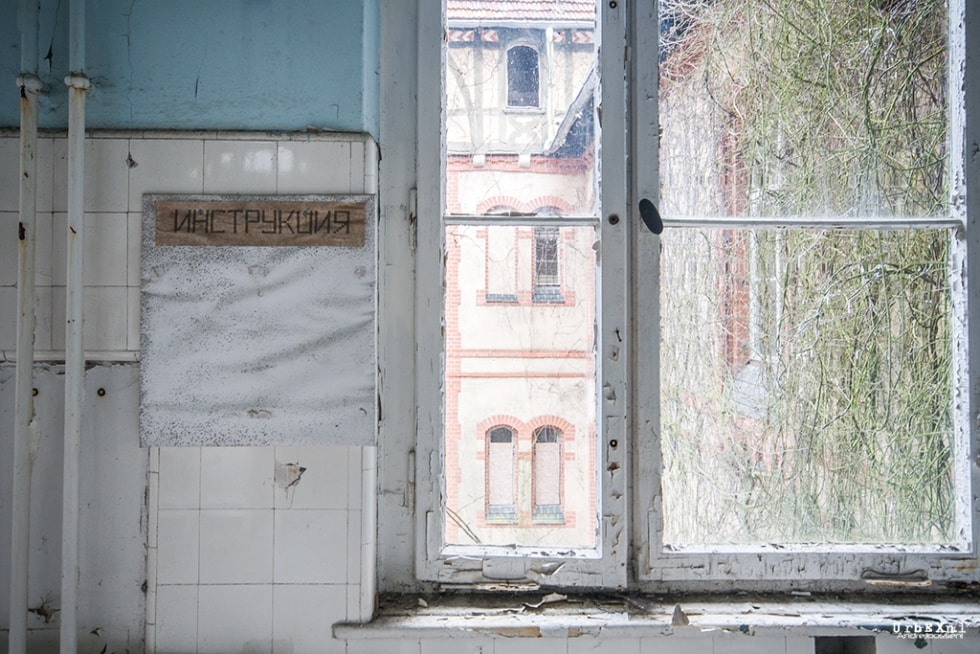Nachtsanatorium J.W. Stalin der Wismut
Hidden in the forests near Auer Talstraße, the Nachtsanatorium J. W. Stalin stands as a forgotten relic of East Germany’s mining industry. Built to support uranium miners, this unique facility provided medical care and rest after exhausting shifts. Over the years, it briefly served as a retirement home before being abandoned in 2003. Today, it remains largely untouched, a silent witness to the past.
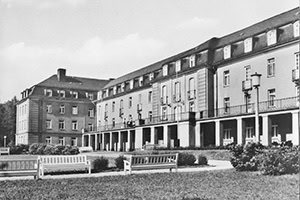
Mining is exhausting work. This was recognized by SDAG Wismut during uranium mining in the former GDR. To improve miners’ health and productivity, Wismut built night sanatoriums. These facilities provided medical care, rest, and therapy after shifts.
Four night sanatoriums
The first night sanatorium in the GDR was built in 1955 in Niederschlema. Here, miners could recover for a few weeks between shifts. Some brigades even stayed together for collective recreation. Wismut eventually built four night sanatoriums in East Germany, including one in Aue: the Nachtsanatorium J. W. Stalin.
This sanatorium in the Ore Mountains offered medical care, physiotherapy, and even cultural activities. Miners could stay for several days, regaining strength before returning to work. The facility played a crucial role in keeping uranium miners healthy during demanding projects.
Decline of uranium mining
However, with the decline of uranium mining in 1990, the sanatorium lost its purpose. In 2001, it was temporarily repurposed as a retirement home while renovations took place at another facility. When the new senior home was completed in 2003, the building was abandoned. Since then, it has remained empty, hidden in the forests near Auer Talstraße.
Today, it is occasionally used as a paintball training ground. Despite the Erzgebirge region’s UNESCO World Heritage application, the sanatorium was excluded from protected status. In 2020, plans for repurposing were discussed, but no action was taken. The Nachtsanatorium J. W. Stalin stands as a forgotten relic of East Germany’s industrial past, slowly fading into history. I visited the abandoned complex in 2016.
